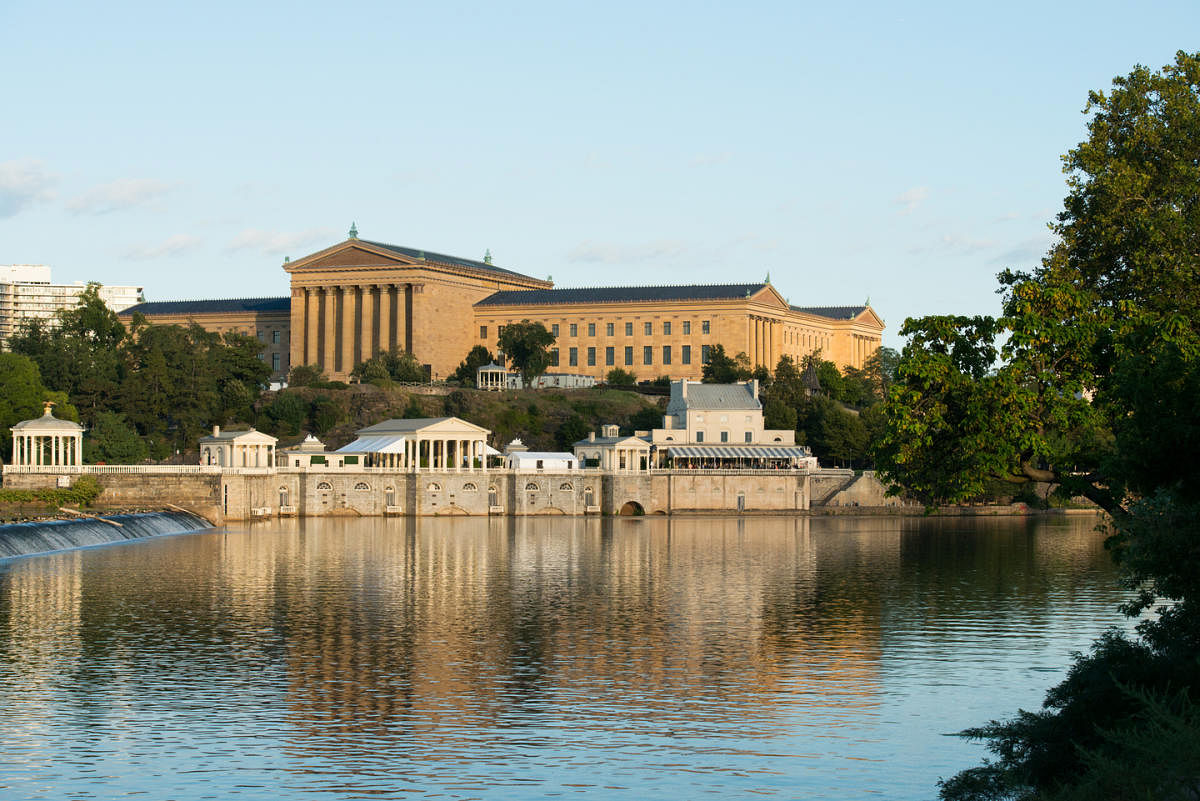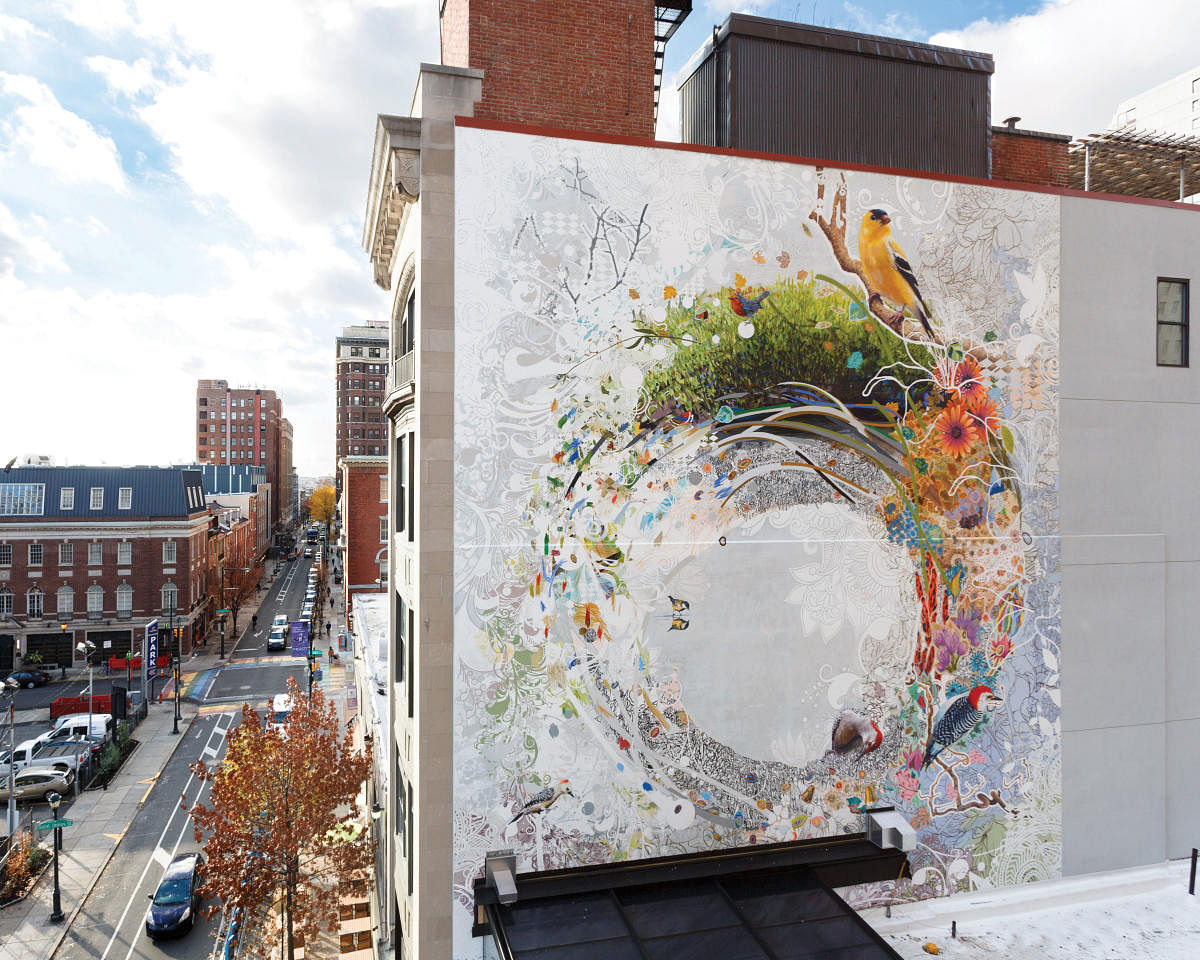

Revealing a new face at every turn, Philadelphia throws up many surprises — the thriving and buzzing metropolis doubles up as an open-air museum with layers of history, art, culture and food to discover as one digs deeper.
Fondly known as ‘Philly’, this is the city where American democracy put its roots and not many know that it was the former capital of the US. Designed by William Penn, the grid system with broad streets and sprawling parks went on to become a model for many American cities. Here, art is not just hidden behind museum walls but finds an expression on walls across the city, earning it the title of the mural capital of the world. Foodies can dig into the legendary Philly cheesesteaks, water ice, sandwiches, Amish pies and more at fascinating open-air markets that are some of the country’s oldest.
No wonder then that the ‘City of Brotherly Love’ went on to win the title of the country’s first World Heritage City in 2015. It may appear overwhelming but there is so much to do in Philly that one must come armed with a list of places to visit. And the best time is NOW as the city is gearing up to host the FIFA World Cup in 2026.
Art & museum trail
Begin the day at The Philadelphia Museum of Art that’s home to over 2,40,000 pieces encompassing many centuries, making it one of the country’s largest art museums.
Go with at least a couple of hours in hand for an up-and-close look at iconic works of masters like Renoir, Van Gogh and Picasso. Admire art as it evolved
from medieval times, the Renaissance period, the Impressionist movement to
modern-day paintings. Run up the Rocky Steps outside the building — they became famous after Hollywood actor Sylvester Stallone sprinted up the 72 steps in the film ‘Rocky’.
Not too far away is the Barnes Foundation, considered to be one of the best
museums dedicated to art with a collection that includes impressionist, post-impressionist and early modern European paintings. It houses the largest collection by artist Renoir anywhere in the world.
Dr Albert Barnes referred to each gallery as an ‘ensemble’ and curated it himself. Unlike most museums, there isn’t a label next to each painting because Barnes felt it took away from the experience of enjoying the breathtaking art pieces. It is best to go for a 60-minute guided tour to understand the collection.
One museum not to be skipped is the Penn Museum. Dedicated to anthropology and archaeology, it has galleries with artefacts from Africa, Asia, America and the Mediterranean region.
The Egyptian section stands out because apart from a wide collection they even have a gallery dedicated to mummies — the ancient art of preserving the body after death. But there are plenty of other galleries that draw interest as well. A quirky and small museum worth a peek at is the Neon Museum of Philadelphia which talks about the preservation of neon signs which have been part of Philly’s art and history. Some of the signs are as old as the 1930s and each has a story behind it.
Sights & sounds
What started in 1984 as an anti-graffiti protest has turned Philly into a colourful outdoor art gallery. Walking around the city is an absolute delight because from brick homes to old and new buildings, from hospitals to bars, more than 4000 eye-catching murals adorn its walls.
They range from the exquisite depiction of a stylised garden to those celebrating cultural icons and disabled people and an evocative mural on a school that seeks to heal the wounds inflicted by youth violence.
Signing up for a walking tour with Mural Arts Philadelphia is the best way to understand this art through the eyes of a professional and local because of the sheer enthusiasm with which they explain the inspiration behind each mural.
The Magic Gardens is unlike any other place in the city. Curated by mosaic artist Isaiah Zagar, he has used handmade tiles, bottles, bicycle wheels and mirror fragments to cover every inch of this space which extends both indoors and outdoors. The end product is a psychedelic delight that truly amazes as one walks through, wondering how he even conceived this.
Make your way to one of the city’s most iconic markets, the Reading Terminal Market, where you can gorge on Philly classics like cheesesteak, soft pretzels, Amish pies and roast pork offered by over 80 merchants, some of who are generations-old family vendors following their own culinary tradition. Make sure to have an ice cream scoop from Bassetts, which is America’s oldest ice cream company. Even if you are not hungry, the sheer energy and buzz here are an unmissable experience.
History trail
It is not surprising why Philadelphia was declared a World Heritage City by UNESCO in 2015 — it is at this very historic site that America gained independence and became a Democratic country. Take a walking tour at The Independence National Historical Park (INHP) for a quick history lesson with a visit to storied sites that become the foundation of American democracy. Among them are the Liberty Bell Center, America’s enduring symbol of freedom, Independence Hall, where the Declaration of Independence was signed in 1776 and many more like the National Constitution Center, all set against lovely lawns and tree-lined streets. You can even visit Betsy Ross’s house — the woman who designed the American flag. A horse carriage ride around this area truly gets one into the spirit of the times. It is after all America’s most historic square mile.
Do not miss Elfreth’s Alley, the country’s oldest continuously inhabited residential street.
Walk down its cobbled alley and admire the 32 houses that contain so much history. Built between the 1720s and 1830s, this street contained the homes and shops of artisans like grocers, shoemakers, tailors etc.
The alley was named after a blacksmith Jeremiah Elfreth and there’s a small museum where you can learn about its history.
It may take more than one trip to do justice to what Philly has to offer but start with these and you would have discovered not just one of America’s most fascinating cities but also take a peek into the country’s past.